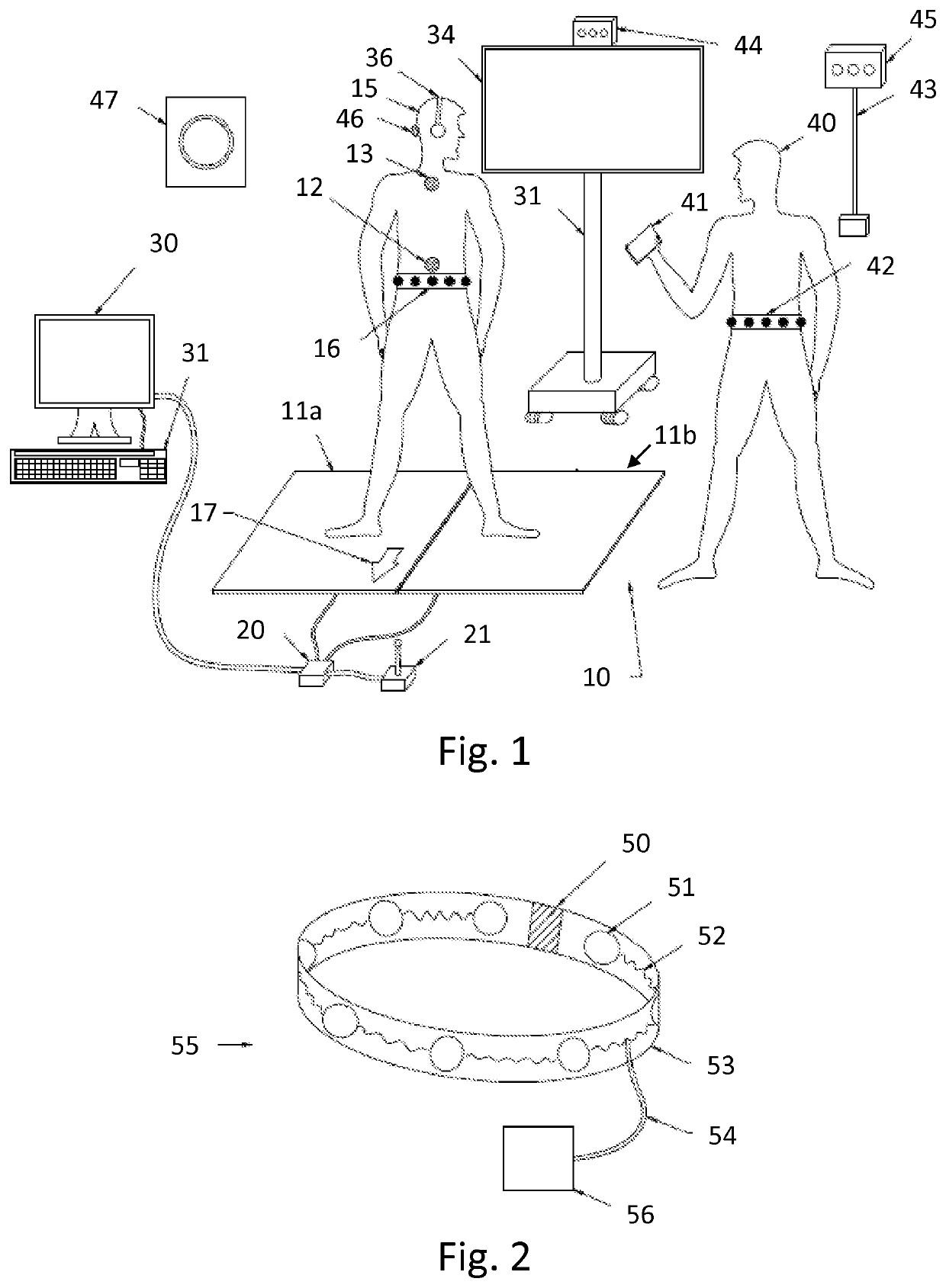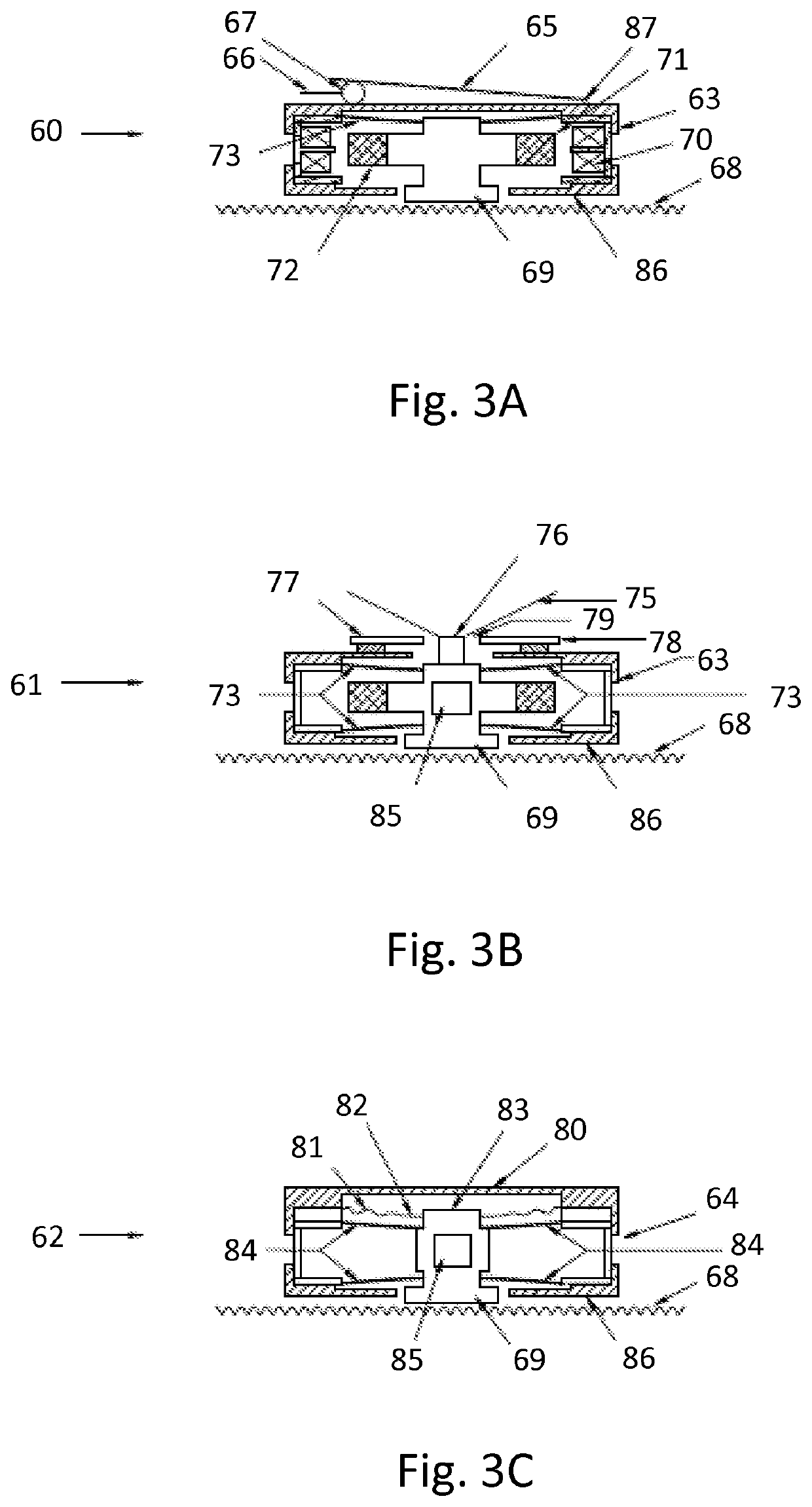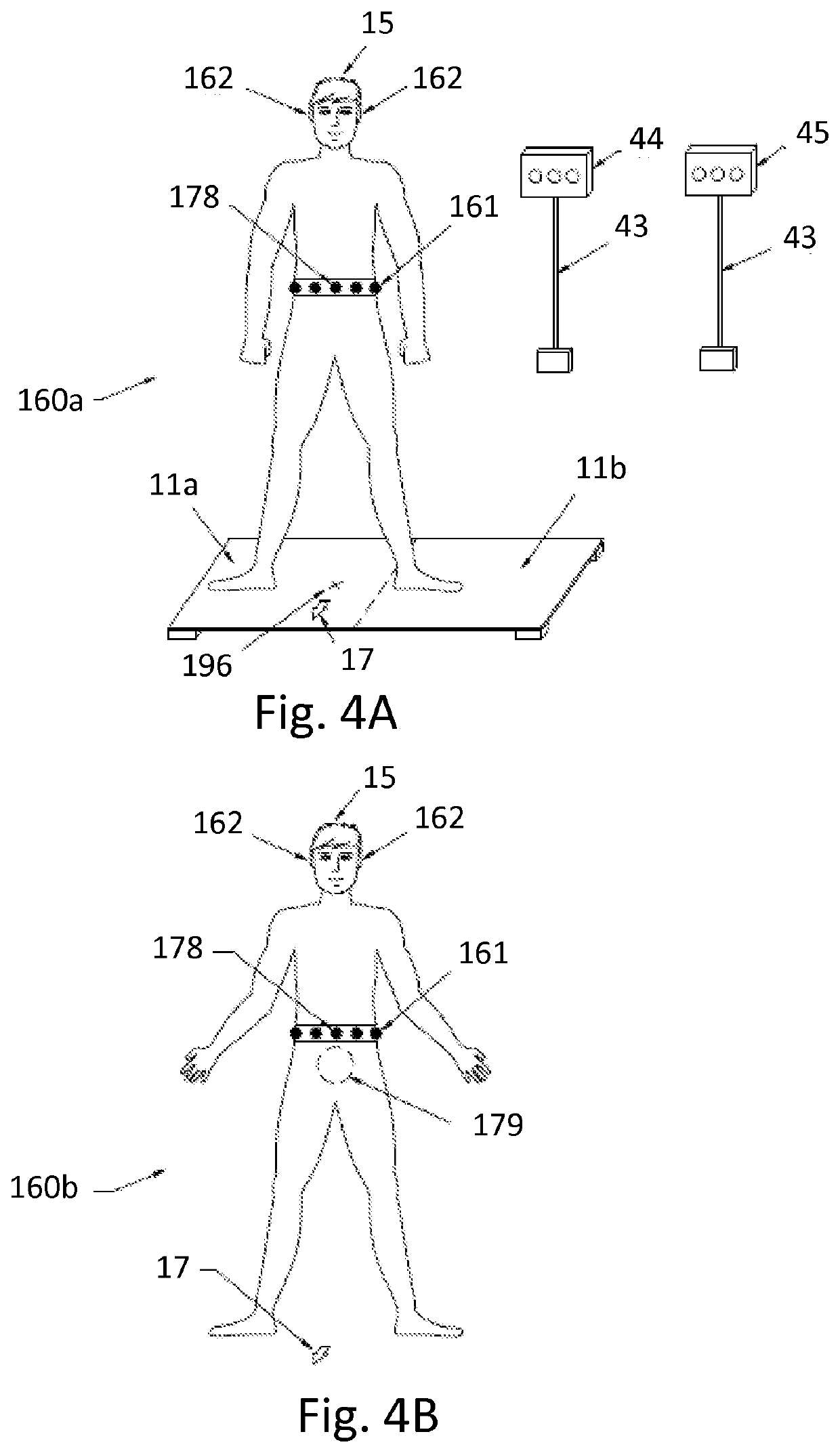Multimodal sensory feedback system and method for treatment and assessment of disequilibrium, balance and motion disorders
a multi-modal sensory feedback and disequilibrium technology, applied in the field of multi-modal sensory feedback system and method for treating and assessing disequilibrium, balance and motion disorders, can solve problems such as debilitating disequilibrium, movement and balance disorders, and complex tasks
- Summary
- Abstract
- Description
- Claims
- Application Information
AI Technical Summary
Benefits of technology
Problems solved by technology
Method used
Image
Examples
Embodiment Construction
[0036]The following documentation provides a detailed description of the invention.
[0037]Although a detailed description as provided in the attachments contains many specifics for the purposes of illustration, anyone of ordinary skill in the art will appreciate that many variations and alterations to the following details are within the scope of the invention. Accordingly, the following preferred embodiments of the invention are set forth without any loss of generality to, and without imposing limitations upon, the claimed invention. Thus the scope of the invention should be determined by the appended claims and their legal equivalents, and not merely by the preferred examples or embodiments given.
[0038]Embodiments according to aspects of the present invention provide systems and methods for providing a subject with assessment or motional training, or both. In particular, embodiments provide motional training by providing a subject with combinations of multimodal sensory feedback th...
PUM
 Login to View More
Login to View More Abstract
Description
Claims
Application Information
 Login to View More
Login to View More - R&D
- Intellectual Property
- Life Sciences
- Materials
- Tech Scout
- Unparalleled Data Quality
- Higher Quality Content
- 60% Fewer Hallucinations
Browse by: Latest US Patents, China's latest patents, Technical Efficacy Thesaurus, Application Domain, Technology Topic, Popular Technical Reports.
© 2025 PatSnap. All rights reserved.Legal|Privacy policy|Modern Slavery Act Transparency Statement|Sitemap|About US| Contact US: help@patsnap.com



